The First Time at the Dentist: A Stress-Free Guide for Parents and Kids

A child’s first dental appointment is an important milestone, but it can also be an intimidating experience for both parents and children. The unfamiliar environment, new faces, and strange tools can be overwhelming. However, with the right preparation and a mindful parenting approach, you can make your child’s first dental visit to a Dentist for a smooth and positive experience. In this guide, we’ll explore how to find a great pediatric dentist, ways to prepare your child for their visit, and the pros and cons of fluoride treatments. How to Find a Good Pediatric Dentist Choosing the right dentist can make all the difference in ensuring a stress-free first visit. Here are some tips to help you find the best fit for your child: Preparing Your Child for Their First Dental Appointment Preparation is key in reducing fear and making the visit enjoyable. Here are some ways to help your child feel ready: 1. Talk About the Visit in a Positive Way Introduce the idea of going to the dentist in an exciting manner. Use books from the best parenting books list that explain dental visits in a fun and engaging way. 2. Role-Play at Home Set up a pretend dentist’s office at home where your child can take turns being the dentist and the patient. This makes the experience feel familiar before they even step into the real office. 3. Schedule a Family Meeting Hold a family meeting to discuss the importance of dental health and answer any questions your child might have. This gives them a sense of involvement and eases their concerns. 4. Use Nonviolent Communication Practice nonviolent communication by validating their feelings: “I understand you might feel nervous, but the dentist is there to help keep your teeth healthy and strong.” 5. Choose the Right Appointment Time Schedule the visit at a time when your child is well-rested and in a good mood, such as in the morning or after a nap. Pros and Cons of Fluoride Treatments Fluoride is commonly recommended to strengthen tooth enamel and prevent cavities, but some parents may have concerns. Let’s break down the benefits and drawbacks: Pros: Cons: If you’re unsure whether fluoride treatments are right for your child, discuss options with your dentist and explore natural methods for maintaining strong teeth. Final Thoughts: Setting the Stage for a Lifetime of Healthy Smiles A child’s first dental visit doesn’t have to be a stressful event. By choosing the right dentist, preparing in advance, and using positive discipline strategies for toddlers, you can help them feel comfortable and confident in the dental chair. Tip: Try brushing your teeth together as a fun activity! Kids love mimicking their parents, and this simple habit reinforces the importance of oral hygiene. For more parenting insights, don’t forget to follow us on Instagram and YouTube for expert guidance and practical tips. For the latest news and updates, click here to view our recent press releases and stay informed about the newest parenting trends and research. Let’s make dental visits a positive experience—one smile at a time!
Organization: Helping Kids Tidy Up Their Spaces
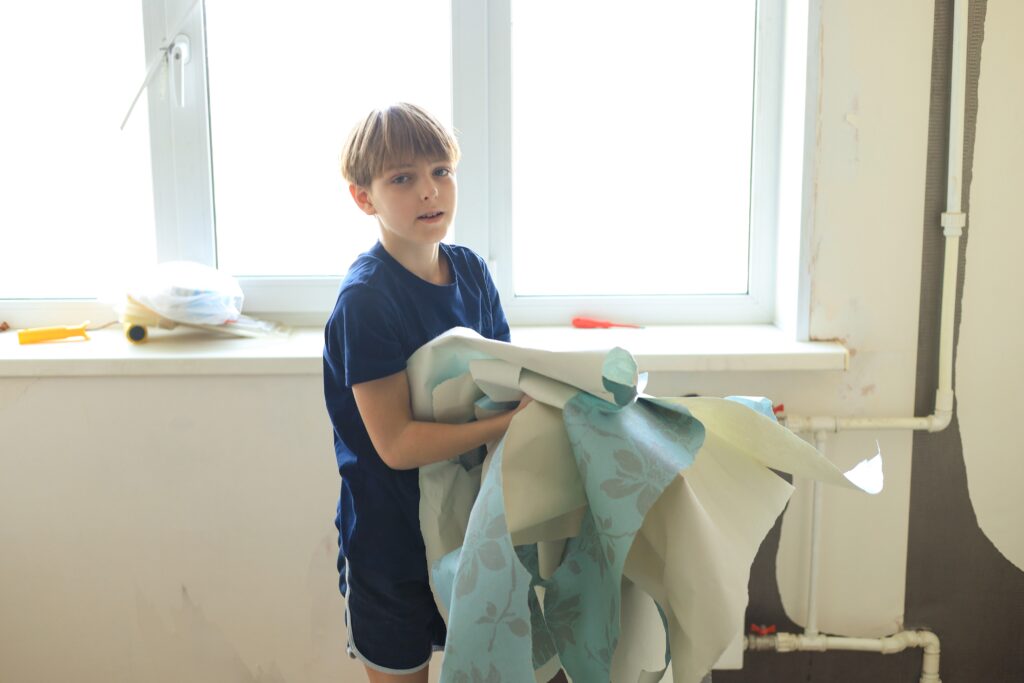
Teaching children to stay organized is one of the most valuable life skills you can impart. By helping them organize their backpacks, toys, and closets early on, you’re setting them up for a lifetime of responsibility and efficiency. These organizational habits not only make life easier but also contribute to family well-being by reducing stress and fostering a calm, orderly environment. Here’s how you can make organization fun and practical for your little ones. Why Organization Matters An organized space helps children feel more in control of their environment, boosting their confidence and ability to focus. It also makes daily routines smoother, whether it’s getting ready for school or finding their favorite toy. According to child development specialists, engaging children in organizational tasks fosters independence, decision-making skills, and self-discipline. Backpack Organization A cluttered backpack can turn into a daily struggle for both kids and parents. Here are some simple tips to help your child stay on top of their school supplies: 1. Create a Weekly Clean-Out Routine Set aside time each week to clean out old papers, snack wrappers, and unnecessary items. Use this opportunity as a moment of parent-child bonding and to teach them how to prioritize what to keep. 2. Use Color-Coded Supplies Encourage your child to use different-colored folders for each subject, making it easier to find assignments quickly. 3. Pack Smart Help them place heavier items, like textbooks, closer to their back and lighter items in the front compartments. This prevents back strain and keeps everything balanced. 4. Add a Checklist Tape a small checklist inside their backpack as a reminder of what they need to pack daily, such as lunch, homework, and sports gear. Toy Storage Solutions Toy clutter can overwhelm a space in no time, but with a little creativity, you can keep things tidy and accessible: 1. Categorize and Label Sort toys into categories like building blocks, dolls, or puzzles. Use clear bins with labels or pictures, so even toddlers can understand where things go. This is a great activity to include as part of activities for toddlers to teach sorting skills. 2. Rotate Toys To keep things fresh, store half of the toys in a separate area and rotate them every few weeks. This reduces clutter and increases excitement when they see “new” toys. 3. Designate a Cleanup Zone Create a small area where kids can gather toys before putting them away. This adds structure to cleanup time and makes the task less daunting. 4. Use Multi-Functional Furniture Storage benches or toy chests that double as seating are perfect for small spaces, keeping toys hidden while maximizing functionality. Closet Design for Little Kids A well-organized closet can make mornings stress-free and help kids feel more independent. 1. Lower the Bar Install a lower clothing rod or hooks so your child can easily reach their clothes. This empowers them to pick out their outfits. 2. Use Dividers Divide clothes by type—shirts, pants, dresses—and use labeled bins for socks, shoes, and accessories. This helps them know exactly where things belong. 3. Seasonal Switch Keep only the current season’s clothing within reach. Store off-season items in bins or higher shelves to minimize clutter. 4. Add a Daily Outfit Organizer Use a hanging organizer with compartments for each day of the week. Together, you can plan outfits during a family meeting or at the start of the week. Tips for Success Additional Resources For more ideas and strategies, explore child development classes online or consult the best parenting resources. Stay informed by visiting our press releases here, and don’t forget to follow us on Instagram and YouTube for more tips and tricks to empower your parenting journey. Final Thoughts: Creating Order, Building Confidence Teaching kids to organize their spaces is about more than tidying up—it’s about fostering independence, building confidence, and creating a calm environment where they can thrive. By starting with simple tasks like backpack organization, toy storage, and closet design, you’re equipping your child with lifelong skills that will serve them well in every aspect of life. So grab some bins, make a plan, and enjoy the process of creating order together. Each step you take is an investment in your child’s success and your family’s happiness.
Montessori Parenting: Bringing Learning and Independence Home
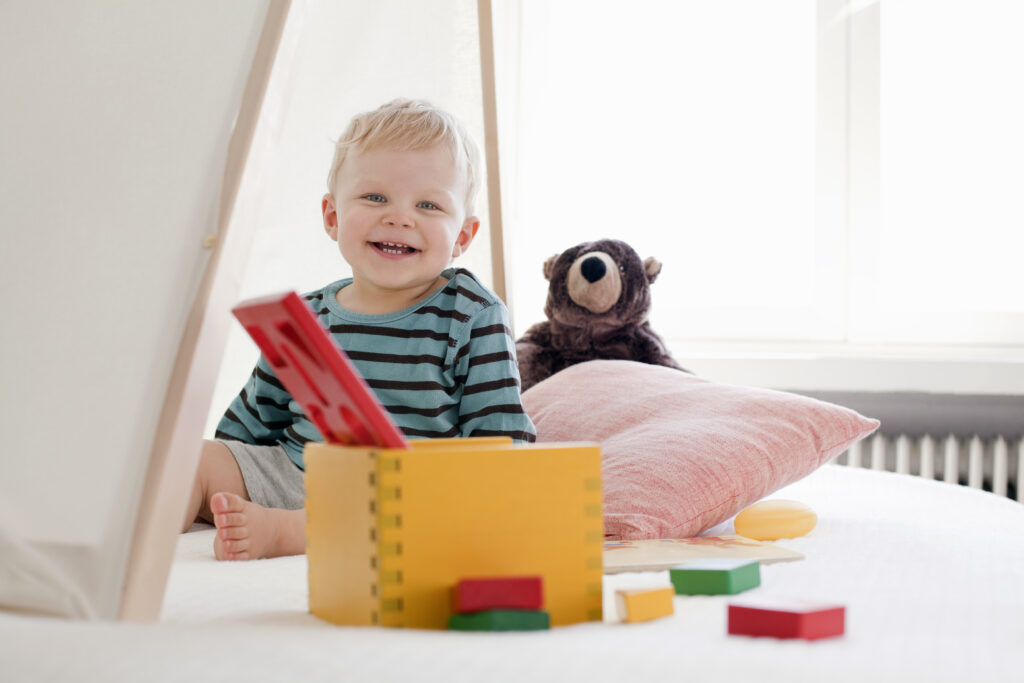
The Montessori method is more than an educational philosophy; it’s a way of life. Rooted in respect, independence, and hands-on learning, Montessori parenting fosters confidence, curiosity, and a love of discovery. While originally designed for the classroom, its principles can easily be applied at home to create an environment that nurtures your child’s growth and development. Let’s explore what Montessori parenting is, how you can incorporate it into your home, and the top 10 toys for toddlers that align with the Montessori method. What is the Montessori Method? Developed by Dr. Maria Montessori, the Montessori method emphasizes child-led learning within a prepared environment. It encourages independence, hands-on exploration, and respect for a child’s natural development. Children are seen as capable individuals who thrive when given the tools and opportunities to explore at their own pace.Montessori parenting adopts these principles in daily life, integrating mindful parenting techniques to foster independence and support emotional and cognitive growth. How to Bring Montessori into Your Home Incorporating the Montessori method at home doesn’t require a complete overhaul. Small changes can make a big impact: 1. Create a Prepared Environment Arrange your home so your child can access what they need independently. This could mean placing toys, utensils, or clothing within their reach. 2. Encourage Independence Involve your child in everyday tasks like cooking, cleaning, or setting the table. These activities build confidence and teach responsibility. 3. Practice Mindful Parenting Be present during your interactions. Listen actively, respect their choices, and guide rather than control. 4. Hold Family Meetings Use family meetings to involve children in decision-making, reinforcing their sense of importance and agency within the family. 5. Embrace Natural Materials Montessori emphasizes the use of natural materials like wood, fabric, and metal over plastic. These are more sensory-friendly and durable, offering a richer learning experience. 6. Provide Open-Ended Toys Choose toys that encourage exploration and creativity rather than ones with a single purpose. Top 10 Montessori Toys for Toddlers The Benefits of Montessori Parenting Montessori parenting supports family well-being by fostering a peaceful, respectful environment where children feel empowered. It also strengthens parent-child bonding through shared experiences and mutual respect. These principles encourage children to explore their interests and build self-confidence, laying the groundwork for future success. If you’re looking to deepen your understanding, consider exploring child development classes online or connecting with a child development specialist for personalized advice. Stay Connected for More Tips For additional guidance on Montessori parenting, visit our press releases here, and follow us on Instagram and YouTube for practical tips, tools, and inspiration to empower your parenting journey. Final Thoughts: A Journey of Discovery Montessori parenting is about more than providing the right toys or creating a prepared environment—it’s about fostering a mindset of respect, curiosity, and lifelong learning. By embracing this approach, you’re giving your child the tools to grow into an independent, confident, and compassionate individual. Start small, adapt as your child grows, and enjoy the journey of discovery together. With Montessori parenting, every moment becomes an opportunity to connect, learn, and thrive.
Gardening with Kids: Growing Together, Learning for Life
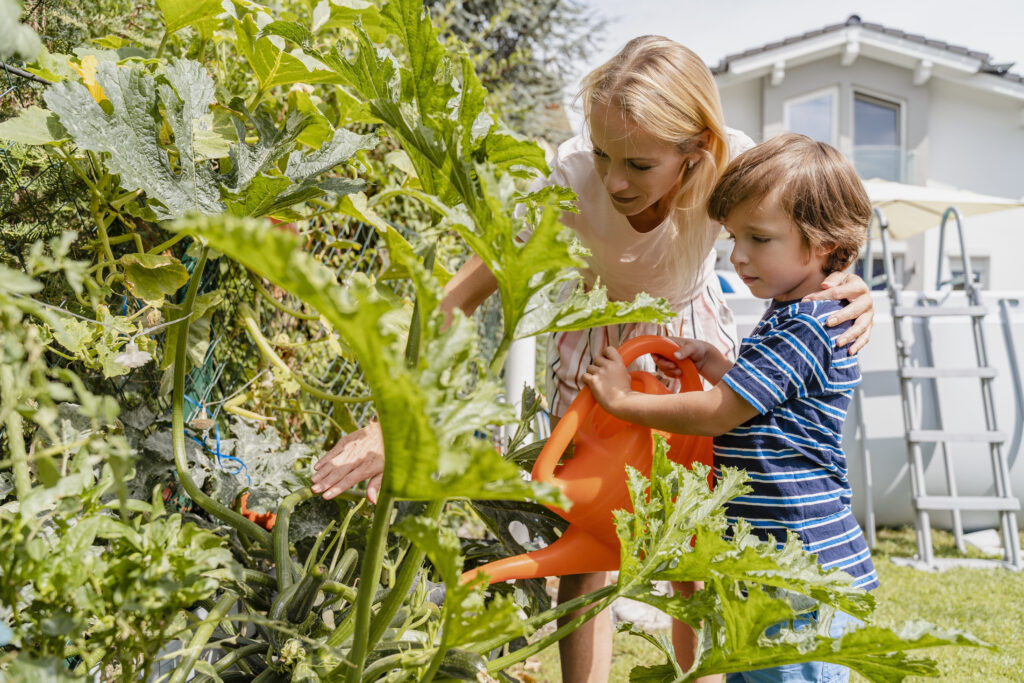
Gardening with kids is more than just a fun outdoor activity—it’s a wonderful way to teach responsibility, patience, and the value of nurturing life. Whether you have a sprawling backyard or a small indoor space, gardening can create lasting memories while contributing to your family’s physical and emotional well-being. Let’s explore the benefits of gardening with kids, tips for getting started, and how to make gardening a year-round activity. The Benefits of Gardening with Kids Gardening provides a host of developmental and emotional benefits for children. It’s an engaging way to learn life skills while fostering parent-child bonding and encouraging hands-on learning. 1. Supports Cognitive and Emotional Development Gardening helps children develop problem-solving skills, patience, and resilience as they care for plants and observe the growth process. It’s a practical application of concepts like cause and effect, making it a great learning experience. 2. Encourages Physical Activity Digging, planting, and watering plants keep kids active and away from screens, contributing to their overall family well-being. Gardening can also be integrated into activities for toddlers, such as planting seeds or watering with a small can. 3. Promotes Healthy Eating Growing fruits, vegetables, and herbs encourages children to appreciate fresh, nutritious foods. Kids are often more willing to eat something they’ve grown themselves, fostering healthier eating habits. 4. Enhances Emotional Well-being Spending time in nature is known to reduce stress and improve mood. Gardening offers children a peaceful environment where they can connect with nature and feel a sense of accomplishment. Tips for Teaching Kids to Garden 1. Start Small Begin with easy-to-grow plants like radishes, lettuce, or herbs. These grow quickly and are less likely to frustrate young gardeners. 2. Provide Age-Appropriate Tools Give kids their own set of gardening tools that are safe and sized for their age. This makes them feel more involved and responsible. 3. Make It Fun Turn gardening into a game or challenge. For example, see who can plant seeds the fastest or grow the tallest sunflower. 4. Teach Through Play Incorporate mindful parenting by being present and engaging with your child’s curiosity. Answer their questions and share fun facts about plants, bugs, or soil. 5. Hold a Family Meeting Before starting a gardening project, hold a family meeting to plan what you’ll plant and where. This involves everyone in the decision-making process and boosts excitement. Gardening in the Yard Outdoor gardening offers a wealth of opportunities for exploration and learning. Indoor Gardening Year-Round If you don’t have outdoor space, indoor gardening is a fantastic alternative. Gardening Resources and Support For additional guidance, explore child development classes online or connect with a child development specialist to learn how gardening can support your child’s development. Access the best parenting resources to discover new gardening ideas and techniques. Stay informed by checking out our press releases here, and follow us on Instagram and YouTube for ongoing tips and creative ideas to empower your parenting journey. Final Thoughts: Growing Together Gardening with your kids is more than planting seeds—it’s about nurturing connections, fostering growth, and creating lasting memories. Whether you’re digging in the dirt together or tending to indoor plants, every moment spent gardening strengthens your bond and teaches your children the value of patience, responsibility, and care. So grab your tools, choose your seeds, and start growing something beautiful together. With every sprout, you’re not just growing plants—you’re cultivating joy, connection, and a love for the natural world that will last a lifetime.
Haircuts and Sensory Issues: A Guide to Stress-Free Grooming
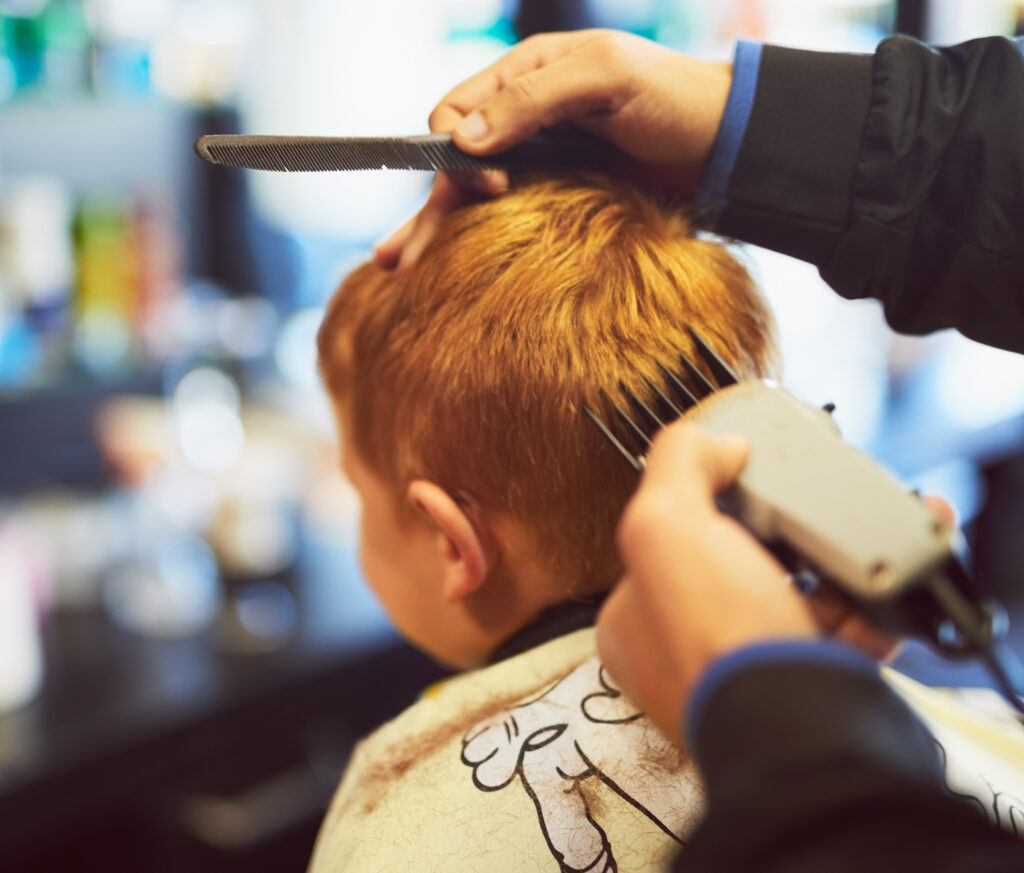
For kids with Sensory Processing Disorder (SPD) or who are on the autism spectrum, getting a haircut can be an overwhelming experience. The unfamiliar sounds, textures, and environment of a salon can trigger anxiety, making what seems like a simple task a challenging ordeal. With the right strategies, tools, and support, you can make haircuts a more comfortable experience for your child. This blog explores tips to help children navigate haircuts, reviews sensory-friendly hair clippers, and offers guidance on finding salons with trained professionals who cater to kids with sensory sensitivities. Tips to Help Kids with SPD Through a Haircut 1. Prepare Them Ahead of Time Talk to your child about the haircut experience in advance. Use social stories, pictures, or videos to show them what to expect. Role-playing with dolls or stuffed animals can also help familiarize them with the process. 2. Create a Predictable Routine Children with SPD often feel more comfortable when they know what’s coming. Establish a consistent routine for haircuts, including scheduling them at the same time of day and at a familiar place. 3. Use Visual or Verbal Cues Guide your child through the process with clear, step-by-step instructions. For younger kids, activities for toddlers like drawing a picture of the haircut process can make it less intimidating. 4. Involve Them in Decision-Making Let your child choose their hairstyle or pick the tools (e.g., clippers or scissors) they prefer. This empowers them and helps reduce anxiety. 5. Sensory Tools and Comfort Items Bring along items that provide comfort, like noise-canceling headphones, a weighted lap pad, or a favorite toy. Consider playing calming music or white noise to create a soothing environment. 6. Break It Down If a full haircut feels overwhelming, consider breaking it into smaller steps, such as trimming a little each day. Celebrate each accomplishment to build their confidence. 7. Practice Mindful Parenting Stay calm and patient throughout the process. Your demeanor will set the tone and help your child feel safe. Sensory-Friendly Hair Clippers: Product Reviews Choosing the right tools can make haircuts easier at home. Here are three sensory-friendly hair clippers that are quiet, lightweight, and designed with kids in mind: 1. Wahl Easy Cut Cordless Clipper 2. Philips Norelco Kids Hair Clipper 3. Calming Clipper Finding Sensory-Friendly Hair Salons Many hair salons now offer services tailored to children with sensory sensitivities or on the autism spectrum. These salons often employ stylists trained to create a calm and accommodating environment. How to Find Sensory-Friendly Salons Additional Support and Resources For more tips and resources on supporting children with sensory issues, explore child development classes online or browse the best parenting resources. Stay updated with our press releases here, and don’t forget to follow us on Instagram and YouTube for practical advice and tools to empower your parenting journey. Final Thoughts: Transforming Haircuts into Positive Experiences Helping your child through haircuts isn’t just about grooming—it’s about building trust, fostering parent-child bonding, and showing them that their needs are understood and respected. With patience, preparation, and the right tools, you can turn haircuts into manageable, even enjoyable, experiences. Remember, every child is different, and what works for one may not work for another. Stay flexible, celebrate small victories, and know that your efforts are making a difference. Together, you and your child can navigate this journey with confidence and connection.For kids with Sensory Processing Disorder (SPD) or who are on the autism spectrum, getting a haircut can be an overwhelming experience. The unfamiliar sounds, textures, and environment of a salon can trigger anxiety, making what seems like a simple task a challenging ordeal. With the right strategies, tools, and support, you can make haircuts a more comfortable experience for your child. This blog explores tips to help children navigate haircuts, reviews sensory-friendly hair clippers, and offers guidance on finding salons with trained professionals who cater to kids with sensory sensitivities. Tips to Help Kids with SPD Through a Haircut 1. Prepare Them Ahead of Time Talk to your child about the haircut experience in advance. Use social stories, pictures, or videos to show them what to expect. Role-playing with dolls or stuffed animals can also help familiarize them with the process. 2. Create a Predictable Routine Children with SPD often feel more comfortable when they know what’s coming. Establish a consistent routine for haircuts, including scheduling them at the same time of day and at a familiar place. 3. Use Visual or Verbal Cues Guide your child through the process with clear, step-by-step instructions. For younger kids, activities for toddlers like drawing a picture of the haircut process can make it less intimidating. 4. Involve Them in Decision-Making Let your child choose their hairstyle or pick the tools (e.g., clippers or scissors) they prefer. This empowers them and helps reduce anxiety. 5. Sensory Tools and Comfort Items Bring along items that provide comfort, like noise-canceling headphones, a weighted lap pad, or a favorite toy. Consider playing calming music or white noise to create a soothing environment. 6. Break It Down If a full haircut feels overwhelming, consider breaking it into smaller steps, such as trimming a little each day. Celebrate each accomplishment to build their confidence. 7. Practice Mindful Parenting Stay calm and patient throughout the process. Your demeanor will set the tone and help your child feel safe. Sensory-Friendly Hair Clippers: Product Reviews Choosing the right tools can make haircuts easier at home. Here are three sensory-friendly hair clippers that are quiet, lightweight, and designed with kids in mind: 1. Wahl Easy Cut Cordless Clipper 2. Philips Norelco Kids Hair Clipper 3. Calming Clipper Finding Sensory-Friendly Hair Salons Many hair salons now offer services tailored to children with sensory sensitivities or on the autism spectrum. These salons often employ stylists trained to create a calm and accommodating environment. How to Find Sensory-Friendly Salons Additional Support and Resources For more tips and resources on supporting children with sensory issues, explore child development classes online or browse the best parenting resources. Stay
Affection: Building Connection and Supporting Brain Development

Affection is one of the most powerful tools in parenting. It fosters connection, builds trust, and nurtures a child’s emotional and cognitive growth. Beyond the warmth it brings, physical contact plays a crucial role in brain development, laying the foundation for healthy relationships and emotional resilience. Let’s explore why appropriate physical contact is essential, how to teach family members about affection, and ways to help children understand appropriate physical boundaries. Why the Brain Needs Physical Contact Physical affection, such as hugs, cuddles, and gentle touches, stimulates the release of oxytocin—often called the “love hormone.” This hormone reduces stress, fosters bonding, and promotes a sense of security. For children, this connection is essential for brain development, particularly in areas responsible for emotional regulation, memory, and social skills. According to child development specialists, consistent physical affection during early childhood helps children develop secure attachments, which are the foundation for healthy relationships throughout life. It also supports family well-being, creating an environment where children feel safe, loved, and valued. For younger children, incorporating affection into activities for toddlers—like holding hands during walks or sitting close while reading—reinforces these benefits naturally. Teaching Family Members About Affection Ensuring a loving and affectionate environment requires cooperation and understanding among all family members. Here are steps to encourage appropriate and meaningful displays of affection within your family: 1. Lead by Example Children often emulate the behavior they see. By practicing open and warm affection with your partner or other family members, you’re setting a powerful example. 2. Hold a Family Meeting Use a family meeting to discuss the importance of affection in strengthening bonds. This is a great opportunity to talk about different ways family members can show love, from hugs and high-fives to verbal affirmations. 3. Celebrate Cultural Differences Every family has unique ways of expressing affection, shaped by cultural or personal values. Celebrate and respect these differences while finding a shared approach that works for everyone. 4. Encourage Verbal Affection Not everyone is comfortable with physical contact, and that’s okay. Teach family members to use words to express love, such as saying, “I’m proud of you” or “I love you.” Teaching Kids Appropriate Physical Guidelines As important as affection is, teaching children about appropriate physical boundaries is equally crucial. It ensures their safety, helps them respect others, and empowers them to advocate for themselves. 1. Teach Consent Early Help your child understand that their body belongs to them and that they have the right to say no to physical contact. Similarly, teach them to respect others’ boundaries. 2. Use Role-Playing Incorporate mindful parenting by using role-playing to teach scenarios where boundaries might come into play, such as greeting someone new or comforting a friend. 3. Explain Different Kinds of Touch Discuss the difference between safe, loving touch (hugs from family) and inappropriate touch. Make it clear they can always come to you if something doesn’t feel right. 4. Provide Age-Appropriate Language For younger kids, use simple phrases like “Hugs are for family and friends who say it’s okay.” As they grow, expand the conversation to include nuanced topics about personal space and relationships. 5. Reinforce with Activities Activities like drawing personal boundaries or creating a “circle of trust” chart can make abstract concepts more tangible for children. Building a Foundation for Life Physical affection, when balanced with boundaries, fosters parent-child bonding and equips children with the emotional tools they need for a fulfilling life. Families practicing conscious co-parenting can work together to create a unified approach, ensuring consistency in messages about love and respect. For additional tips and resources, explore child development classes online or consult the best parenting resources available. Stay updated by visiting our press releases here, and follow us on Instagram and YouTube for expert advice and practical ideas that empower your parenting journey. Final Thoughts: A Loving Touch Affection is one of the simplest yet most profound ways to show love and support for your child. From cuddles on the couch to a pat on the back for a job well done, these moments create a lifetime of trust, security, and confidence. By practicing affection mindfully and teaching appropriate boundaries, you’re giving your child the tools to build healthy relationships and navigate the world with confidence. So hug often, express love freely, and let your family be a place where affection flows naturally, fostering joy and connection for generations to come.
Safe Halloween: Protecting Your Children While Keeping the Fun

Halloween is an exciting time for children and families. Costumes, candy, and community celebrations make it a holiday to remember. However, with strangers, alcohol at parties, and distracted parents in the mix, ensuring your child’s safety becomes a top priority. By planning ahead and practicing mindful parenting, you can create a memorable and safe Halloween for everyone. Planning for a Safe Halloween Preparation is key to a safe and enjoyable Halloween. Here are steps to take before heading out for trick-or-treating or attending any celebrations: 1. Choose Safe Costumes Costumes should be fun but also practical. Here’s what to keep in mind: 2. Map Out Your Route If you’re trick-or-treating, plan your route in advance. Stick to well-lit areas and neighborhoods you’re familiar with. This minimizes the risk of encountering unsafe environments. 3. Discuss Safety Rules Before heading out, hold a family meeting to go over basic safety rules. Topics to cover: Tips for Safe Trick-or-Treating 1. Go as a Group There’s safety in numbers. Whether you’re walking as a family or with friends, traveling in a group reduces risks and ensures kids are less likely to wander off. 2. Stay Visible Equip your child with a flashlight or glow-in-the-dark accessories. These not only make them easier to spot but also add a fun element to their costume. 3. Check Candy Carefully Before allowing your child to dig into their candy haul, inspect it for tampering. Discard anything that looks opened, unusual, or homemade (unless from someone you trust). Attending Halloween Parties Halloween parties can be fun for older children and families, but they also come with potential hazards, such as alcohol and crowded spaces. Here’s how to keep it safe: 1. Supervise Younger Kids Keep an eye on young children, especially if the party has open alcohol or other distractions. Conscious parenting helps you stay present and aware of your child’s surroundings. 2. Monitor Food and Drinks Make sure your child sticks to food and drinks you’ve approved. It’s easy for little ones to grab something inappropriate in the excitement of a party. 3. Encourage Respectful Behavior Parties often include interactions with unfamiliar people. Teach your child to be polite but cautious, reinforcing boundaries and personal space. Safe Fun at Home If trick-or-treating or parties aren’t your style, consider hosting a Halloween celebration at home. This option allows for creative, safe fun. Ideas for a Home Halloween Party: These activities foster family well-being while keeping the excitement of Halloween alive. Additional Safety Tips for Parents Resources for Parenting Support For more insights on safety, parenting, and child development, check out the best parenting resources available on our website. You can also find helpful advice through child development classes online or by consulting a child development specialist. Stay updated on the latest trends and safety tips by visiting our press releases here, and follow us on Instagram and YouTube for ongoing tips that will empower your parenting journey. Final Thoughts: A Halloween to Remember Halloween is a magical time for kids, filled with fun and adventure. By taking proactive steps to ensure their safety, you can focus on creating memories that last a lifetime. Whether it’s planning your route, choosing the perfect costume, or holding a family meeting to go over safety rules, each effort contributes to a joyful and secure experience. This Halloween, embrace the excitement, practice safety, and enjoy the holiday with your little ones. After all, the most important treat is the peace of mind that comes from knowing your family is safe and happy. Have a spooky, safe, and spectacular Halloween! 🎃
Birth Order and Personality: Understanding Your Child’s Unique Traits
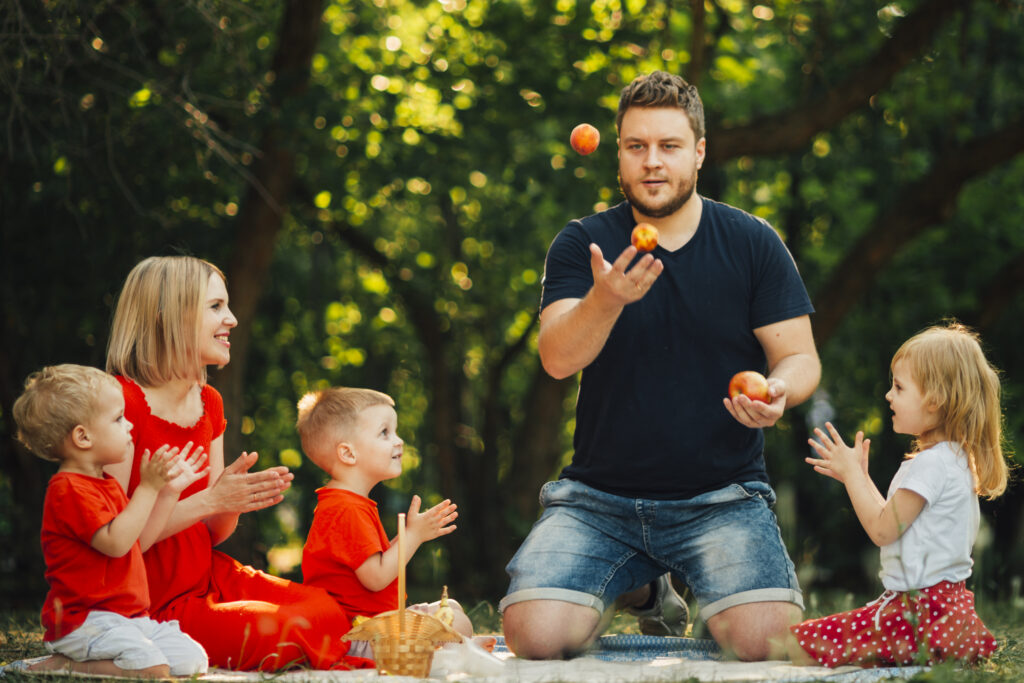
Birth order has long been a topic of fascination among parents and psychologists alike. It’s believed that a child’s position within the family—whether they’re the firstborn, middle child, or youngest—can influence their personality, behavior, and even the dynamics of their relationships. While every child is unique, understanding the general patterns associated with birth order can help parents foster stronger connections and create a harmonious family environment. Firstborn: The Responsible Leader Firstborn children often take on the role of the leader within the family. As the eldest, they tend to be more responsible, organized, and achievement-oriented. Parents often place higher expectations on firstborns, which can lead to traits like perfectionism and a strong drive for success. These children may also develop nurturing tendencies, stepping into a “mini-parent” role for their younger siblings. Key Traits of Firstborns: Parenting Tip: Encourage firstborns to relax and enjoy activities that allow them to unwind, such as activities for toddlers if they’re young or hobbies that don’t involve competition. Ensure they know it’s okay to make mistakes and prioritize fun alongside responsibility. Middle Child: The Diplomatic Peacemaker Middle children often find themselves in the role of mediator, balancing relationships between their older and younger siblings. They tend to be adaptable, social, and empathetic, as they’ve grown up navigating family dynamics. Middle children may seek their own identity outside of their siblings, often pursuing unique interests or friendships. Key Traits of Middle Children: Parenting Tip: During a family meeting, give middle children the opportunity to share their thoughts and feelings. This helps them feel valued and ensures their voice isn’t lost in the shuffle. Celebrate their unique interests to reinforce their individuality. Youngest Child: The Free-Spirited Charmer The youngest child often takes on the role of the family’s entertainer or free spirit. With older siblings to pave the way, the youngest tends to enjoy a more relaxed set of expectations. They’re often charming, creative, and adventurous but may also rely on others for support or decision-making. Key Traits of Youngest Children: Parenting Tip: While fostering the youngest child’s creativity, provide structure and encourage independence. Balancing freedom with responsibility ensures they grow into confident, capable individuals. How Birth Order Impacts Family Dynamics Understanding birth order can help parents create a harmonious family environment by recognizing and addressing the unique needs of each child. This aligns with mindful parenting, which encourages being present and attuned to your children’s emotional and developmental cues. Conscious co-parenting can also play a significant role in balancing dynamics. By collaborating on how to address each child’s individual needs, parents can reduce sibling rivalry and ensure that every child feels equally loved and supported. Tips for Navigating Birth Order Dynamics Stay Informed and Connected For more tips and insights on parenting strategies and child development, follow us on Instagram and YouTube. We share expert advice, practical tools, and real-life stories to empower your parenting journey. To stay updated on the latest research and resources, check out our press releases here for the most recent information on family dynamics and child behavior. Final Thoughts: Embracing the Unique Traits of Each Child Birth order provides a fascinating lens through which to view your children’s personalities, but it’s only one piece of the puzzle. By understanding their unique traits and tailoring your approach, you can nurture their growth, foster stronger relationships, and create a family environment where everyone thrives. Celebrate your firstborn’s leadership, your middle child’s diplomacy, and your youngest’s creativity. Together, these qualities make your family dynamic rich and special. Parenting is a journey, and with a little insight and intentionality, you can guide your children to become the best versions of themselves.
Guiding the Way: Understanding Lighthouse Parenting

Parenting is often described as one of life’s greatest journeys, and like any journey, it’s easier with a guiding light. That’s where lighthouse parenting comes in. This balanced approach emphasizes guiding children through life with care and attention, like a lighthouse providing direction to ships in the storm. It’s about being a steady, supportive presence while allowing your children to navigate their own paths. Lighthouse parenting blends the principles of conscious parenting with practical strategies for fostering independence, emotional resilience, and a sense of security. Let’s dive deeper into this approach and explore how it can transform your parenting journey. What is Lighthouse Parenting? Lighthouse parenting is a term coined by Dr. Kenneth Ginsburg, a pediatrician and child development expert. It’s based on the idea that parents should act as beacons of light—guiding their children safely through challenges while letting them explore and grow. This approach strikes a balance between being involved and giving children the space they need to learn from their experiences. Lighthouse parents provide structure, set boundaries, and instill values while encouraging independence and critical thinking. Key Principles of Lighthouse Parenting How to Practice Lighthouse Parenting 1. Set Clear Boundaries Children thrive with structure, but they also need flexibility to explore. Establish rules that are firm yet reasonable, and explain the reasons behind them. For example, holding a family meeting to discuss house rules ensures that children feel involved and understand the expectations. 2. Encourage Independence Give your child opportunities to make decisions appropriate for their age. Whether it’s letting toddlers choose their outfits or allowing older kids to plan their schedules, these experiences build self-reliance and problem-solving skills. 3. Focus on Emotional Development Lighthouse parenting emphasizes emotional intelligence. Teach your child to identify and express their emotions in healthy ways. This approach aligns with practices taught in child development classes online and supported by child development specialists. 4. Balance Support and Freedom Be there when your child needs you, but resist the urge to solve every problem for them. Offering guidance while allowing them to face challenges on their own builds resilience and adaptability. The Benefits of Lighthouse Parenting Tips for Starting Your Lighthouse Parenting Journey Stay Informed and Empowered For more tips on parenting styles and strategies, check out our press releases here and follow us on Instagram and YouTube. We offer expert advice and real-life examples to empower your parenting journey. Final Thoughts: Lighting the Path for Your Child Lighthouse parenting is about finding the balance between providing guidance and allowing independence. By being a steady, supportive presence, you’re equipping your child with the tools they need to navigate life’s waters confidently. Embrace the journey, trust in your parenting instincts, and remember that your love and guidance are the most important beacons in your child’s life. Together, you’ll create a foundation of trust, resilience, and connection that will carry them through life’s challenges and triumphs.
Baby Signing: A Bridge to Early Communication and Connection

Baby signing is a powerful tool that can help toddlers express their needs before they’re able to speak. Imagine being able to understand what your child wants without tears or tantrums! Signing helps bridge the communication gap, making the early years smoother for both parents and children. Teaching simple signs can foster stronger connections, reduce frustration, and lay the groundwork for language development. Why Baby Signing Matters Babies are naturally eager to communicate, but their vocal cords and language skills aren’t fully developed in the first year or two of life. This often leads to frustration on both ends, as babies have needs and desires they can’t yet verbalize. Signing gives them a way to communicate before words fully emerge. Using signs in a child’s early life aligns with conscious parenting principles, encouraging us to be attentive to our child’s cues and respond to their needs in a supportive manner. When babies can communicate through signs, it enhances parent-child bonding and builds trust. Studies have shown that babies who learn basic signs tend to develop language skills more confidently, and early communication can lead to fewer tantrums and a calmer family environment. Getting Started with Baby Signing Starting with baby signs doesn’t have to be overwhelming. Simple, consistent gestures are often all it takes. Ideally, begin with a few basic signs that correspond to everyday needs or activities. Babies usually start signing back between 6-12 months, and using these signs regularly helps them understand and remember. Mindful parenting can help you integrate signing naturally. Engage your child by making eye contact, repeating the sign, and saying the word aloud. This approach reinforces the concept without overwhelming your baby. Top 5 Signs to Teach Your Baby Here are five basic signs to help your baby communicate their needs: Tips for Success with Baby Signing The Bigger Picture: Communication and Family Connection Baby signing not only empowers your child but also strengthens family communication. When your baby can express their needs, it reduces frustration for both of you and enhances family well-being. By creating a communication-rich environment, you’re building a strong foundation for language and connection that supports both short-term understanding and long-term emotional development. For more resources and tips on effective communication with your child, follow us on Instagram and YouTube. We share expert insights and practical advice that empower your parenting journey and provide tools for fostering a healthy family environment. Final Thoughts: Building Bonds Through Communication Teaching your baby to sign is a beautiful way to connect and communicate before words are fully formed. It’s an investment in your relationship, showing your child that you understand their needs and are committed to their growth. Every sign, every gesture, and every shared moment adds to a foundation of love and trust. So embrace this journey, have fun with the signs, and enjoy the milestones as your little one learns to express themselves. These moments are precious, and each sign brings you one step closer to a world of understanding and joy with your child.

